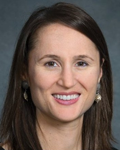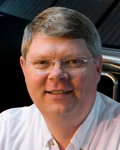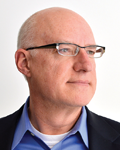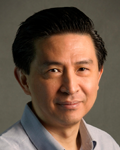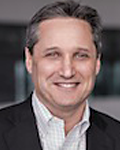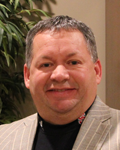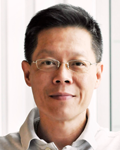Jason Stowe
CEO
Cycle Computing
 Jason Stowe, CEO of Cycle Computing, has made a name for his company as a developer and provider of software to enable greater access to utility supercomputing, leading to an era of increased invention, and scientific discovery.
Jason Stowe, CEO of Cycle Computing, has made a name for his company as a developer and provider of software to enable greater access to utility supercomputing, leading to an era of increased invention, and scientific discovery.
This past November, Cycle announced the largest Fortune 500 cloud cluster run, leveraging 70,908 Intel Ivy Bridge cores to achieve a theoretical peak performance of 729 teraflops for just $5,594 (the cost of the AWS compute).
Under Jason’s leadership, Cycle Computing products have been deployed by Fortune 500 companies in industries from life sciences, insurance, manufacturing and energy to financial services, demonstrating that the combination of Cycle cloud management tools and AWS clusters can open up a new world of infrastructure options for organizations with HPC needs.
HPCwire: Hi Jason. Congratulations on being selected as an HPCwire 2015 Person to Watch. You have been a rock star in the space since arriving on the scene, spinning up massive HPC clusters on Amazon Web Services with Cycle and basically being a leader in showing the world what the potential for HPC in the Cloud actually is. How did this all get started, and what is personally driving you along the way?
It actually started as a 16 year old at Carnegie Mellon, I was lucky enough to get a college job working with the Pittsburgh Supercomputing Center. I was awed by the people, the science, and the scale. That feeling never left and years later while rendering a Disney movie, I just kept thinking there had to be a more efficient way to get more compute to the people who need it. Next thing you know, Cycle was born and we had a insurance company, a bank, and a defense contractor as customers.
I’ve seen firsthand the benefit that increased access to resources can mean to science, industry, and society. We take the traditional, inefficient process, where humanity’s smartest people are forced to wait hours in queue, or worse, weeks to months for new compute & storage, and shorten that to minutes. And I get to do this with a great team of smart, honest, and engaging Cyclers that make seemingly impossible cloud workloads possible for customers every day.
What drives us is the amazing work we get to be a part of. Our customers are literally trying to build better rockets, manufacture better products, manage risk better for people’s retirements, and find better treatments for disease. These workloads will touch all of humanity, and we couldn’t be more excited about it.
HPCwire: In your position, you get to see first-hand a lot of the work that is being done out in the field using cloud-based supercomputing. What are some of the interesting trends that you’re witnessing from your vantage point that you can share with us?
The better way to look at it is reactions that become trends. The first one is the impact on people when they realize that there is no longer a cap on the available resources to solve their problem. We are not talking about the select few researchers with access to the world’s largest machines. I mean ANY researcher. It totally changes their approach to problem solving. They no longer think about what they can fit inside their infrastructure, they ask the right questions, the ones that can change their business, or can push humanity forward.
The second is the reaction of the people who own the infrastructure. Once we sit down with them, they realize we are not there to replace their infrastructure, we help them maximize it. It goes back to my days at PSC, those guys were my heroes then and I want to make them heroes to their users. They are the ones calling us, not the rogue users.
HPCwire: One of the mantra’s of Cycle Computing is along the lines that we are in a new era of access and collaboration with computing abilities that we didn’t have previously at affordable prices. What does it mean to live in a world with this level of access to supercomputing resources? Where is the rubber meeting the road in this area, and what can we look forward to in the near term?
In the near term, there will be more adoption of HPC in the commercial sector than in many previous years combined. The user base for technical computing is about to get a lot bigger. The center directors have wrestled with deployment models that lent themselves much better to grants than annual budgets.
Cycle is as much an HPC company as Uber is a taxi service. We connect people with a problem and a deadline to companies who have the resources to address that problem within that deadline. When organizations begin to understand the broader implications of that, we’ll start to truly see humanity pushed forward.
And that’s where we’re seeing traction, across all forms of analytics, modeling, and simulation. User are thinking bigger, asking the right questions and accelerating their work. In the near term, I expect more Cloud Technical Computing use cases, more adoption, and more stories of phenomenal engineering and science at an unprecedented pace.
HPCwire: On a more intimate level, what can you tell us about yourself – personal life, family, background, hobbies?
My life revolves around Cycle, our team, our mission, and most importantly, my family. I was lucky enough to meet my wife in 2000, and we have two energetic, smart, and beautiful daughters that are a joy to us.
